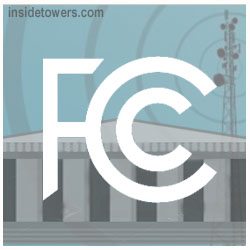The FCC on Thursday voted to create two innovation zones in North Carolina and Massachusetts for advanced wireless communications and network research — particularly 5G and Open Radio Access Networks or Open RAN. The action also expands innovation zones in New York City and Salt Lake City.
Innovation zones give researchers and licenses opportunities to test new advanced technologies and prototype networks without the need to update their licenses for each test, according to the agency. These FCC-created test beds are managed by the National Science Foundation funded Platforms for Advanced Wireless Research.
During the 4-0 vote, FCC Commissioner Brendan Carr said, “This will make it a lot easier for individual innovators to make progress on 5G.”
The new innovation zone in Raleigh, NC will allow focused experimentation for drone use cases, according to FCC Commissioner Geoffrey Starks. “UAS [Unmanned Aerial Systems or drones] have tremendous potential, with benefits for public safety applications like critical infrastructure inspections, firefighting, and preservation and monitoring of our vast natural resources in rural areas or tribal lands,” said Starks. “UAS also offers potential benefits for consumers and other industries through innovative delivery services, transportation, and telecommunications.”
But Starks said allocating enough licensed spectrum for drones has been an issue and may be stifling innovation. He said it’s time to address the problem, which means moving forward in a coordinated fashion with federal partners, the Federal Aviation Administration and the National Telecommunications and Information Administration. “We will need licensed spectrum for a truly integrated airspace, free of harmful interference. If you’ll forgive the pun, without licensed spectrum, UAS can’t truly take off,” said Starks.
Asked about this afterwards by reporters, Acting Chairwoman Jessica Rosenworcel said: “Most UAS systems today use unlicensed spectrum.” The FCC has already allocated spectrum, for example, in the 900 MHz band and 5 GHz band, for this use, she explained. “We are already working with the FAA to develop these kinds of rules,” said the Acting Chairwoman. Plus, she added, “wireless service providers are talking to us” about their needs. Rosenworcel said the agency hopes to complete proposed rules on the issue “in short order.”
During the meeting, Rosenworcel explained that, up until now, research institutions, manufacturers, and other large entities would file to get a program license, which authorizes them to conduct a range of experiments within facilities under their control without seeking an individual experimental license for each one. “Innovation Zones take this concept and crank up the possibilities,” said Rosenworcel. “That’s because they are city-scale testbeds that make it possible for anyone with a program license to show up and conduct experiments. They make opportunities for innovation accessible to both large entities and small players.”
Rosenworcel is especially excited about opening up testbeds to advance ongoing work to develop Open RAN. “Doing this now will help ensure that this technology develops here, on our shores,” she said during the vote. “This, in turn, could mean more competition and security in network equipment for 5G service and beyond. It’s a way to turn up the innovation and supercharge competition and vendor diversity in the 5G supply chain.”
The new North Carolina State University Innovation Zone in Raleigh, NC, will house the Aerial Experimentation and Research Platform for Advanced Wireless, which will focus on new use cases involving wireless communications and unmanned aerial systems. The new Northeastern University Innovation Zone, in Boston, will support the transition of the Defense Advanced Research Projects Agency’s Colosseum network emulator to a shared platform, usable by the research community.
The expanded New York City Innovation Zone will now also cover the three Columbia University and City College of New York campus areas with a technical focus on ultra-high-bandwidth and low-latency wireless communications with tightly coupled edge computing. The expanded Salt Lake City Innovation Zone already operates in several University of Utah campus areas as well as a corridor connecting those areas.
By Leslie Stimson, Inside Towers Washington Bureau Chief





Reader Interactions